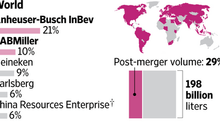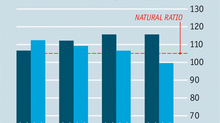The Forgotten Ones: American Prisoners and Disenfranchisement
- Annie Chen
- Nov 2, 2015
- 3 min read
The American Prison System, the largest in the world, is one fraught with issues that go beyond the problems of right and wrong. Prisons are created for three reasons: punishment, correction, and deterrence of crime, but, when our focus should be on correction and deterrence, our policies are instead putting all our efforts into punishment that affect not only people in prison but also those beyond the prison system. The American public often forgets prisoners, seeing them as entities separate from the main population. Though they are physically separated from us, we need to remember that they are humans who may one day return to society and become our neighbors.
The largest number of incarcerations in the world is found in our own home country before North Korea and Russia and has increased by over 700% in the last 40 years, with about 2.4 million people in 1,719 state prisons, 102 federal prisons, 2,259 juvenile correctional facilities, 3,283 local jails, and 79 Indian Country jails as well as in military prisons, immigration detention facilities, civil commitment centers, and prisons in the U.S. territories. 4% of taxpayer money goes into corrections, varying by state, with New York having the highest average price of $60,000 annually per prisoner.

However, putting aside statistics, mass incarceration in the United States has created problems beyond the system as common people are being cheated out of their hard-earned money and freed prisoners are left without resources and are severely disenfranchised in almost all of America. A significant chunk of taxpayer money does not actually go into prisons but instead into the pockets of private prisons and publicly traded corporations that hold stakes in private prisons. The prison business is complex and not at all transparent with shady accounting processes and hidden costs. According to a Vera Institute of Justice study, in 2012, there was a $5.4 billion gap between the reported corrections budgets of the 40 states examined by the study—$33.5 billion—and the actual cost to taxpayer of $39 billion.
Policymakers make it even harder for convicts to assimilate back into society by allowing disenfranchisement and discrimination run rampant. Disenfranchisement and discrimination have become more punishment for ex-offenders who have already paid the price by giving away years of their lives. According to the Prison Policy Initiative:
Percent of all voting age Americans disenfranchised (not allowed to vote, temporarily or permanently) by reason of a felony conviction: 2.28%
Number of states that deny the vote, for life, to all ex-offenders in their state who have completed their sentences: 8
Number of states that disenfranchise prisoners convicted of a felony: 48
Number of states that disenfranchise felony probationers: 29
Number of states that disenfranchise felons on parole: 33
Percent of states in the year 1800 that disenfranchised some or all of their convicted felons: 0%
Much has changed in the last century that have made the American incarceration system out of control as policymakers have made it so that men and women and even children are punished for crimes, most of which are petty crimes based on things like the Stop and Frisk policy and blatant racism.
Many freed prisoners are not given the same rights as other people and are not given the resources needed to help them re-enter society. They are left with little to no familial or societal support, making it significantly harder for ex-convicts to find jobs and housing. Ex-convicts are ineligible for public housing, welfare, student loans, food stamps and other government aid, and it leaves them with no choices. These lack of resources lead to high rates of recidivism, homelessness, and suicides.
American policy has recently seen the error of its ways, as, for the first time in decades, the amount of incarcerations have not increased in the United States. However, we are still a long way from reform, and it will take more active policy-making to help make corrections to a highly flawed system.
Sources:
http://www.prisonpolicy.org/reports/pie.html
https://smartasset.com/insights/the-economics-of-the-american-prison-system



















Comments